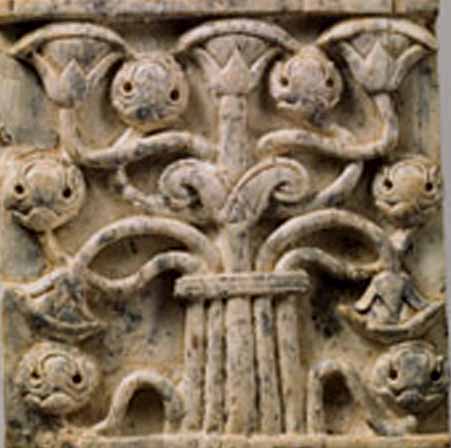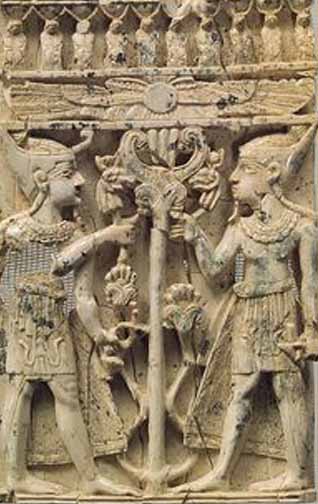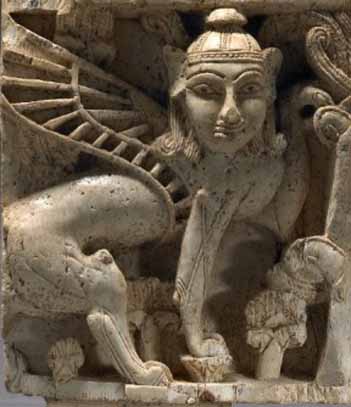It looks like you're using an Ad Blocker.
Please white-list or disable AboveTopSecret.com in your ad-blocking tool.
Thank you.
Some features of ATS will be disabled while you continue to use an ad-blocker.
share:
Is it possible that some of these out of place artifacts are peace offerings from other cultures?
Kind of how France made the Statue of Liberty. Just on a smaller scale. Maybe each one represents a pact between the deceased and some other ruler??
Im just spitballing...
Kind of how France made the Statue of Liberty. Just on a smaller scale. Maybe each one represents a pact between the deceased and some other ruler??
Im just spitballing...
a reply to: Spider879
Yes there has to be an Egyptian context for those Numidians and Kush-ites, can't have been easy presenting a monkey, Leopard cub and antelope all at the same time, never mind an ostrich!
a reply to: burdman30ott6
It's a mess alright, i think the discoveries at Nimrud really under reported and appreciated and much of that down to politics at the time, the fact they were discovered by Iraqi's, if several Queens tombs had been discovered in Egypt with thousands of artifacts they'd be much more widely known and exhibited.
a reply to: Chickensalad
Maybe because they were found in the context of the vaults beneath the Harem and the Queens graves their connections could have been a part of the cosmopolitan nature of the collection, Queens of foreign birth with large number of dowry gifts.
Yes there has to be an Egyptian context for those Numidians and Kush-ites, can't have been easy presenting a monkey, Leopard cub and antelope all at the same time, never mind an ostrich!
a reply to: burdman30ott6
It's a mess alright, i think the discoveries at Nimrud really under reported and appreciated and much of that down to politics at the time, the fact they were discovered by Iraqi's, if several Queens tombs had been discovered in Egypt with thousands of artifacts they'd be much more widely known and exhibited.
a reply to: Chickensalad
Maybe because they were found in the context of the vaults beneath the Harem and the Queens graves their connections could have been a part of the cosmopolitan nature of the collection, Queens of foreign birth with large number of dowry gifts.
edit on Kam13116vAmerica/ChicagoSaturday1731 by Kantzveldt because: (no reason given)
fascinating, many thanks for a good read, and fine photographs.
originally posted by: Kantzveldt
a reply to: undo
Sort of looks like a little alien in the middle but they appear to have grown on trees;
oh tree of life motif? or tree of knowledge motif? one of those. mixed with egyptian lotus blossom. interesting!!!!
And here's another with a row of Wadjet at the top;
makes sense. inana was isis (and the wife of narmer/enmerkar), afterall.
They seem to have liked strange Egyptian ivories, in fact their collection reminds me of Father Crespi's...!?!
that is really unique. looks hindu too. like a mix of egyptian and hindu and babylonian.
edit on 17-1-2015 by undo because: (no reason given)
Two species of lotus were native to ancient Egypt:
The white lotus (Nymphaea lotus)
The blue lotus (Nymphaea cerulea)
The pink lotus (Nelumbo nucifera) was introduced to Egypt from Persia (modern Iran) during the Late period. The lotus was the only flowering plant in Egypt that bloomed continuously throughout the year
www.landofpyramids.org...
there we go. persia had their own lotus blossom. doesn't explain why the motif is egyptian in style, however. wonder if we can date how far back in egyptian iconography the lotus first appears.
a reply to: Kantzveldt
I was able to go there when I was in the military, because of what I did and who I worked for I was able to go to these places and see some of these things. I don't have access to any of the artifacts or locations but I do know not many people get to go in there or see this place fully.
I was able to go there when I was in the military, because of what I did and who I worked for I was able to go to these places and see some of these things. I don't have access to any of the artifacts or locations but I do know not many people get to go in there or see this place fully.
a reply to: Chickensalad
As Kantz said, some things may be dowries or even tributes from subjected tribes/nations. More likely it's cross cultural influence, as contact and trade were well established then. On top of, many different and separate cultures find the same topics/objects worthy of artwork!
As Kantz said, some things may be dowries or even tributes from subjected tribes/nations. More likely it's cross cultural influence, as contact and trade were well established then. On top of, many different and separate cultures find the same topics/objects worthy of artwork!
a reply to: undo
In Egyot the Lotus blossom goes right back to the first Dynasties and probably beyond, the Atum emerging from it as the light of the Sun in terms of Nefer-Atum, the perfection of the Atum.
It had association with life and in particular life as beautiful and sensual in terms of experiencing the pleasant aroma of it's bloom, in that sense again the context of Assyrian Kings inhaling the fragrance of the Lotus as a plant of life has to be seen in the context of the private side of his life, the harem, i couldn't see them making such statements in terms of grand public architecture lest they appeared decadent and under the influence of foreign cults.
a reply to: Brotherman
Yes you see it's yourself that has the experience and potential contacts to dig out anything unusual in Iraq that American service personal might have seen, i mean i can evaluate anything seen or described but not much more than that.
In Egyot the Lotus blossom goes right back to the first Dynasties and probably beyond, the Atum emerging from it as the light of the Sun in terms of Nefer-Atum, the perfection of the Atum.
It had association with life and in particular life as beautiful and sensual in terms of experiencing the pleasant aroma of it's bloom, in that sense again the context of Assyrian Kings inhaling the fragrance of the Lotus as a plant of life has to be seen in the context of the private side of his life, the harem, i couldn't see them making such statements in terms of grand public architecture lest they appeared decadent and under the influence of foreign cults.
a reply to: Brotherman
Yes you see it's yourself that has the experience and potential contacts to dig out anything unusual in Iraq that American service personal might have seen, i mean i can evaluate anything seen or described but not much more than that.
edit on Kpm13116vAmerica/ChicagoSaturday1731 by Kantzveldt because: (no reason given)
a reply to: Kantzveldt
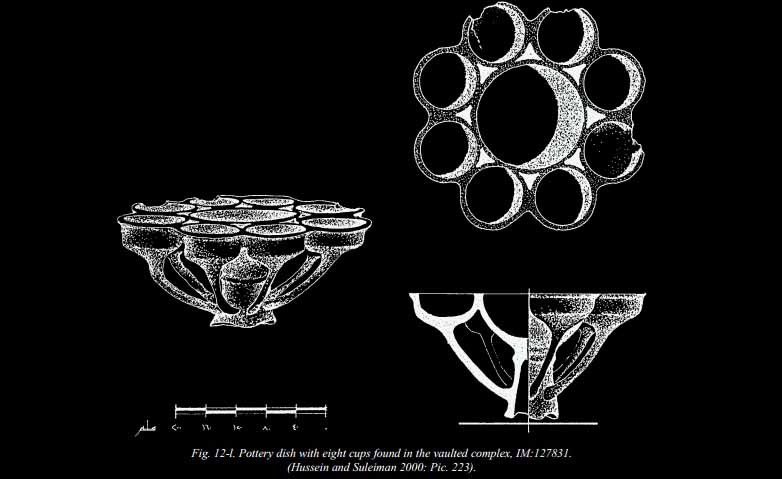
That is bizarre, I wonder what it represented? Also, what is Giselian? So many questions, sorry!

That is bizarre, I wonder what it represented? Also, what is Giselian? So many questions, sorry!
a reply to: Kantzveldt
I see.
I like that tubular cup, though. 9 always seems to be an important number, even cross-culturally (I'm making the assumption they used the middle hole too). Hmm, lots to think about - great thread.
I see.
I like that tubular cup, though. 9 always seems to be an important number, even cross-culturally (I'm making the assumption they used the middle hole too). Hmm, lots to think about - great thread.
originally posted by: Kantzveldt
a reply to: beansidhe
Maybe just had a practical use say on the dinner table serving eight condiments or eight shades of eye shadow as a bedroom accessory i dunno, but Giselians have little particle use they're inter-dimensional beings apparently...long story.
oh i want to hear that story.
a reply to: Kantzveldt
Those rings are much more intricate than the ones we saw in Memphis (Tn) at the Ramses exhibit.
I have a weird fascination with ancient rings. (lol-almost typed "ancient rinds")
Some of them look like the kind of rings that may have belonged to aliens-but that may just be the Stargate SG-1 nerd in me.
Those rings are much more intricate than the ones we saw in Memphis (Tn) at the Ramses exhibit.
I have a weird fascination with ancient rings. (lol-almost typed "ancient rinds")
Some of them look like the kind of rings that may have belonged to aliens-but that may just be the Stargate SG-1 nerd in me.
a reply to: Kantzveldt
Trust me Kantz when I get back to PA from my current location and I get time in my 3 days before have to leave to go farther south and I can get my photos of anything UR or Babyl(on) I will find a way to get them your way. I don't know what half of the stuff I was looking at was but I photographed things because like you I too am an artist and thought the things I took pictures of were awesome without knowing who or what they were made for or to represent. I know you are pretty into Babylon and ancient Mesopotamia, I find anything interesting I will either post it or find a way to just send things to you directly. Keep up the good work, I usually learn things from your threads
Trust me Kantz when I get back to PA from my current location and I get time in my 3 days before have to leave to go farther south and I can get my photos of anything UR or Babyl(on) I will find a way to get them your way. I don't know what half of the stuff I was looking at was but I photographed things because like you I too am an artist and thought the things I took pictures of were awesome without knowing who or what they were made for or to represent. I know you are pretty into Babylon and ancient Mesopotamia, I find anything interesting I will either post it or find a way to just send things to you directly. Keep up the good work, I usually learn things from your threads
a reply to: undo
Giselians are FL's term for trans-dimensional beings;
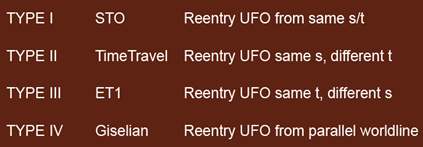
As i mentioned in their article on Nimrud on this page they suggest Giselian artifacts were recovered and i'm sort of hoping to evaluate them myself so hence the thread, but nothing is ever so straightforward, maybe they have a take on the eight bowl arrangement also.
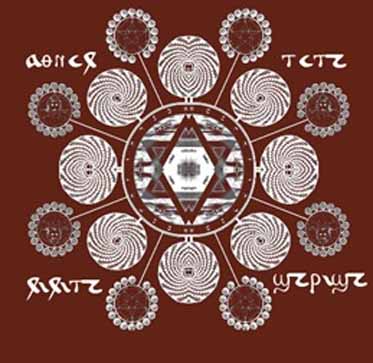
a reply to: Brotherman
Sounds good, maybe you could make a thread or something, i always find the American military against the backdrop of ancient Mesopotamia intriguing for some reason.
Giselians are FL's term for trans-dimensional beings;

As i mentioned in their article on Nimrud on this page they suggest Giselian artifacts were recovered and i'm sort of hoping to evaluate them myself so hence the thread, but nothing is ever so straightforward, maybe they have a take on the eight bowl arrangement also.

a reply to: Brotherman
Sounds good, maybe you could make a thread or something, i always find the American military against the backdrop of ancient Mesopotamia intriguing for some reason.
edit on Kpm13116vAmerica/ChicagoSaturday1731 by Kantzveldt because: (no reason given)
In mentioning geometry plenty of examples of the flower of life motif turn up from Nimrud;
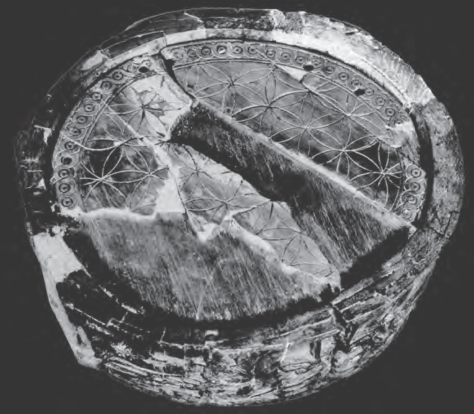
The origin of these seems to have been the Jemdet Nasr period of Uruk around 5,000 years ago;
Flower of life Mystery


The origin of these seems to have been the Jemdet Nasr period of Uruk around 5,000 years ago;
“A Remarkable Collection of Babylonian Mathematical Texts” by in Joran Friberg, page 207) shows equilateral triangle and hexagon calculations with the square root of 3 approximations. These arithmetic and geometric properties are fundamental in the FOL. In addition, sexagecimal place value system was already known in the 3rd millenium BC. Geometrical link between circle, hexagon and sexagecimal system is genuinely demonstrated by Jaime Vladimir. Yet the Sumerian brown stone cylinder seal with two six-petal rosettes originates from 3000 BC. Actually similar seals can repeatedly be found from the late Uruk and Jemdet Nasr period ie. 3100 – 2900 BC.
The pillar cone mosaic from the ancient Sumerian city, Uruk in 3400 – 3100 BC, shows a tessellation pattern in the temple pillars. 60 degrees zig-zag rhombus or lozenge pattern formed from two equilateral triangles is inside the FOL geometry.
Flower of life Mystery

new topics
-
Federal law trumps state and local law every time
Social Issues and Civil Unrest: 5 hours ago
top topics
-
Federal law trumps state and local law every time
Social Issues and Civil Unrest: 5 hours ago, 11 flags
active topics
-
Petition Calling for General Election at 564,016 and rising Fast
Political Issues • 91 • : gortex -
The Reactionary Conspiracy 13. The plot’s theology.
General Conspiracies • 311 • : Oldcarpy2 -
Anyone like the Scorpions?
Music • 18 • : Moon68 -
The Acronym Game .. Pt.4
General Chit Chat • 992 • : Moon68 -
Federal law trumps state and local law every time
Social Issues and Civil Unrest • 14 • : BeyondKnowledge3 -
Interesting Video-UFO?
Aliens and UFOs • 14 • : BeyondKnowledge3 -
Ed Dowd some good news
Medical Issues & Conspiracies • 39 • : chr0naut -
Post A Funny (T&C Friendly) Pic Part IV: The LOL awakens!
General Chit Chat • 7829 • : KrustyKrab -
I thought Trump was the existential threat?
World War Three • 74 • : PorkChop96 -
DOJ Special Counsel Robert HUR Says JOE BIDEN Can Be ARRESTED After Jan 20th 2025.
Above Politics • 20 • : Flyingclaydisk

